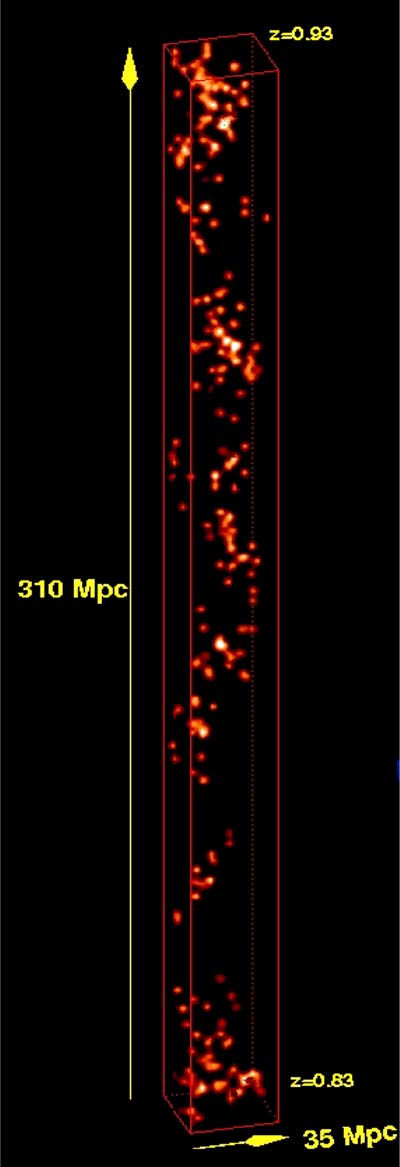Nature vs. Nurture Debate is Universal

Thequestion of "nature vs. nurture" applies to more than just child development.Astronomers have long tried to answer this same question about galacticevolution. And according to a recent study, environment may be an importantfactor in shaping a galaxy'sproperties over time.
At thebeginning of the 20th century, Edwin Hubble realized that galaxies today arenot randomly distributed. Old, red elliptical galaxies, which have no or fewnew stars, tend to be found in clusters,whereas young, blue spiral galaxies, where stars are still forming, tend tohave fewer neighbors.
Astronomerstheorized that either this had always been the case in the universe, or some influence of thesurrounding environment must have changed the distribution and shape ofgalaxies over time.
A team ofastronomers investigated this conundrum using the European SouthernObservatory's VeryLarge Telescope to build a three-dimensional atlas of the universe goingback more than 9 billion years. They studied more than 6,500 galaxies to seehow their properties varied over different timescales.
"Wediscovered that, when the universe was younger, this segregation betweengalaxies' form and environment did not exist," astronomer Christian Marinoni ofthe Laboratoire d'Astrophysique de Marseille, France told LiveScience.
Their researchshowed that both elliptical and spiral galaxies were found in differentenvironments, which suggests that the shape of galaxies is affected by somephysical mechanism that has acted over nearly the whole life of the universe.
"This isthe smoking gun we were looking for," Marinoni said.
Get the Space.com Newsletter
Breaking space news, the latest updates on rocket launches, skywatching events and more!
The team'sfindings suggest if a galaxy is located in a cluster, its ability to form newstars is quenched more quickly than galaxies located in sparser areas.Simulations agree with these findings--according to Marinoni the gasin clusters become too hot to cool down and collapse to form newstars.
More luminousgalaxies also exhaust their star-forming material more quickly.
"Ourresults indicate that environment is a key player in galaxy evolution, butthere's no simple answer to the 'nature versus nurture' problem in galaxyevolution," said astronomer Olivier Le F?vre. "They suggest that galaxies as wesee them today are the product of their inherent genetic information, evolvedover time, as well as complex interactions with their environments."
Thisarticle is part of SPACE.com's weekly Mystery Monday series.
- New Clues to How Galaxies Evolve
- Hubble Sees Galactic Evolution in Odd Stellar Collection
- Amazing Galaxies: Great Backyard Images
- All About Galaxies
Join our Space Forums to keep talking space on the latest missions, night sky and more! And if you have a news tip, correction or comment, let us know at: community@space.com.

Andrea Thompson is an associate editor at Scientific American, where she covers sustainability, energy and the environment. Prior to that, she was a senior writer covering climate science at Climate Central and a reporter and editor at Live Science, where she primarily covered Earth science and the environment. She holds a graduate degree in science health and environmental reporting from New York University, as well as a bachelor of science and and masters of science in atmospheric chemistry from the Georgia Institute of Technology.









